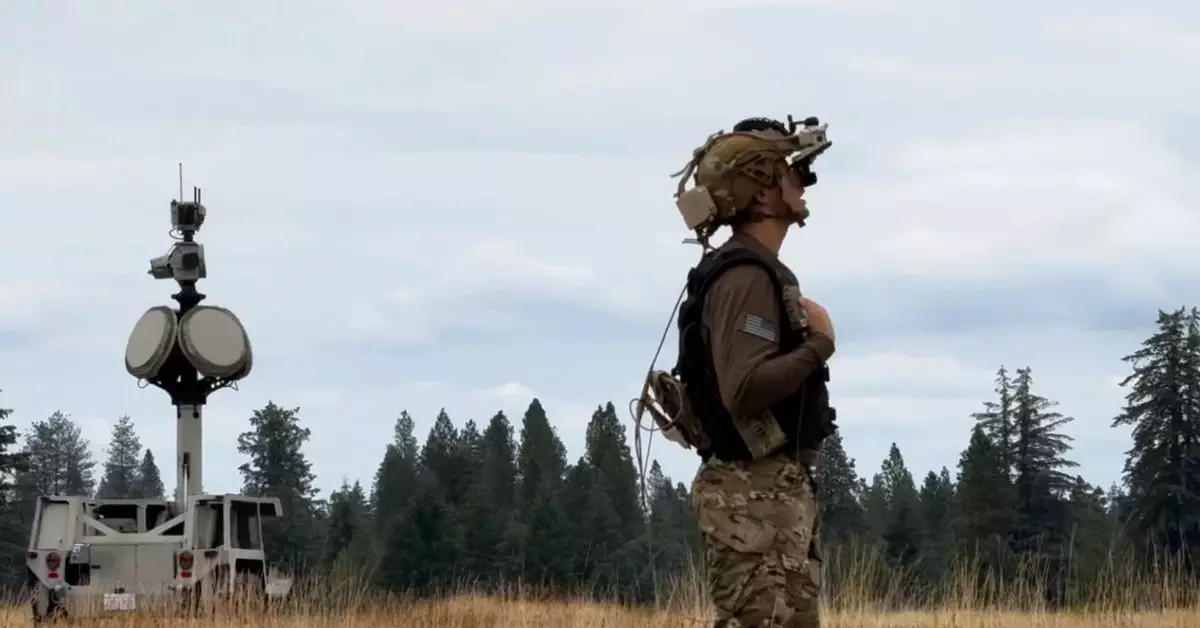In a groundbreaking partnership, Anduril Industries and Microsoft are altering the landscape of military technology with their commitment to integrating advanced mixed-reality systems for the United States Army. Launched by Palmer Luckey, the founder of Oculus VR, Anduril Industries is focusing on harnessing innovation in defense technology. By merging Microsoft’s Integrated Visual Augmentation System (IVAS) with Anduril’s Lattice software, they are crafting a new frontier in soldier support systems that promises to revolutionize how the Army operates on the battlefield.
The collaboration aims to enhance situational awareness among soldiers by embedding the Lattice software into the IVAS platform. This integration will allow soldiers wearing the HoloLens-based goggles to receive real-time updates from various sources including drones and ground vehicles. Such capability ensures that soldiers are not only aware of their immediate surroundings but also gain insights into tactical changes occurring beyond their line of sight. An example of this application could be the timely alerts regarding incoming threats detected by remote air defense systems. This technological enhancement not only retains soldier safety but also optimizes their operational efficiency.
Luckey has explicitly stated his vision, drawing parallels to comic book superheroes by claiming the intent is to bestow upon soldiers the near-omnipotent perception that fictional characters like Superman possess. In an intriguing comparison, he invoked the imagery prevalent in Robert Heinlein’s literary work “Starship Troopers,” suggesting that the integration of these technologies is evolving in a manner reminiscent of science fiction. By invoking such cultural references, Luckey emphasizes the imaginative yet tangible implications of their work, expanding the narrative beyond mere military applications to a broader, almost philosophical dialogue about human capabilities in warfare.
However, the road to innovation has not been straightforward. The initial designs of the IVAS headset faced criticism due to negative user experiences, including headaches and nausea. Acknowledging these issues, Microsoft has taken steps to revise the design, illustrating a critical responsiveness to user feedback. This iterative approach underscores the complexity of creating an effective military device that combines cutting-edge technology with user comfort. With further testing slated for early 2025, the commitment to refining the IVAS highlights the importance of continuous improvement in defense applications.
The financial stakes are significant, with the U.S. Army planning to invest up to $21.9 billion over a decade into the ambitious IVAS project. Such an investment reflects a broader trend towards embracing technology as an essential element of modern warfare. As these collaborations continue to evolve, they signify not only advancements in tactical capabilities but also a shift in how conflicts may be approached in the future. The question remains whether these advancements will enhance the moral complexities of warfare or just serve as tools for more effective combat operations.
The partnership between Anduril and Microsoft positions itself at the cusp of military innovation, striving to create a future where technology significantly changes the dynamics of soldier engagement and battlefield effectiveness. The ongoing developments within this partnership will inevitably influence the next generation of military operations, making it an exciting area to watch in the years to come.


Leave a Reply